Landscape lighting is a particularly important part of courtyard lighting design. It focuses on a sense of atmosphere.
Through the contrast of light and dark, it highlights the characteristics and charm of the landscape,
attracts focused attention, plays the role of embellishment, and creates different landscape atmospheres,
or romance. Warmth, elegance and mystery, or petty bourgeoisie.
1.Landscape lighting
①Plant landscape lighting
Flowers, green plants, and shrubs are essential landscapes in the courtyard. Plant landscape lighting can adopt two lighting methods: uplighting or downlighting. It uses light to show the characteristics of the plants and at the same time, adds beauty to the courtyard at night.
Plants such as low flowers and shrubs are not suitable for close-range projection lighting. You can choose long-distance projection with lighting from top to bottom. The lighting is softer and even, and can present a more complete plant shape.

Tall trees are often used as backgrounds in courtyards. The lighting does not need to be too bright, as long as it can illuminate. You can use floodlights under the canopy to illuminate the branches and leaves at different levels, highlighting the structure and structure of the trees. A sense of power, adding atmospheric light and shadow.

2.Architectural landscape lighting
Architectural landscape lighting uses light to shape the outline of the building, enrich the lighting levels of the courtyard at night, highlight the charm of the building, and integrate the building with nature to enhance interest. Buildings such as pavilions, landscape walls, rockery sculptures or pillars can use floodlights or wall washers to emphasize their three-dimensionality and achieve the effect of painting with light and shadow.
Use decorative lighting on pillars or landscape walls to provide guidance and limit the space for night activities.
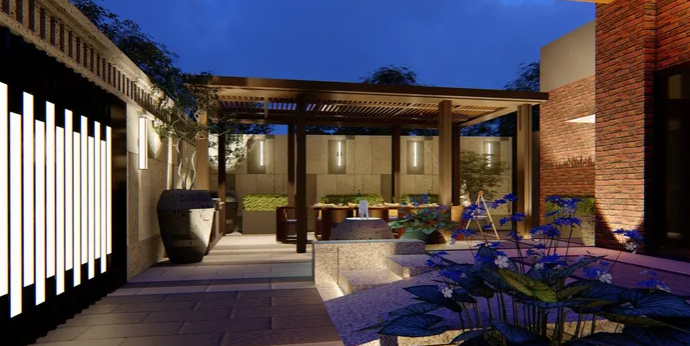
Rest areas such as pavilions can be used for ambient lighting to provide a comfortable and soft lighting environment.
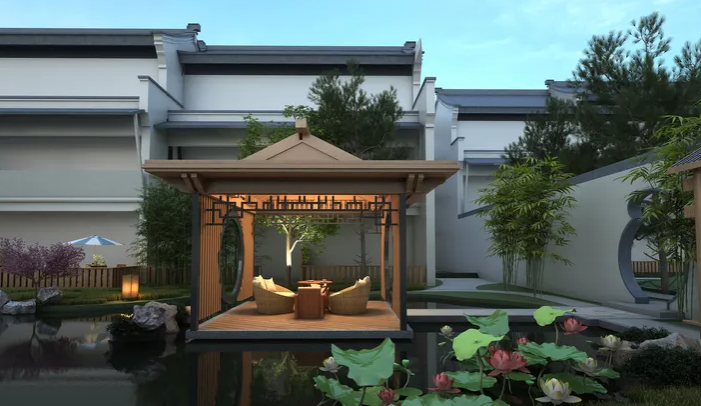
③Ground landscape garden of lights
The courtyard will have steps, lawns, flagstone paths and other ground landscapes that require lighting. Ground landscape lighting can not only ensure the safety of homeowners walking at night, but also illuminate the ground and guide vision and walking direction.
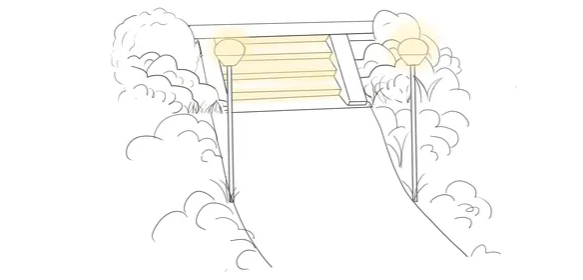
Footlights, step lights and other lighting fixtures can be installed on steps and paths.
Solar lights or lawn lights of different shapes can be used on lawns, which can not only make every step safe and worry-free, but also improve the aesthetics of the courtyard.
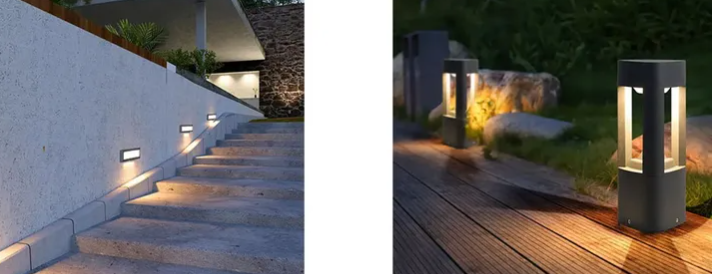
④Water landscape garden of lights
The waterscape of the courtyard includes pools, fountains, swimming pools and other landscapes. The lighting methods of the waterscape can be divided into water landscape lighting and underwater landscape lighting according to the installation position of the lamps.
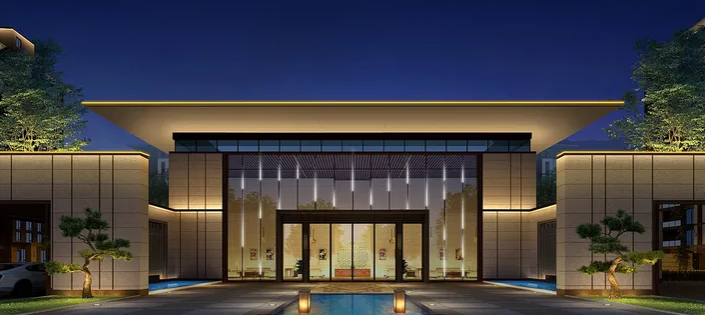
In a pool or swimming pool, lamps can be arrang-ed at the bottom or wall of the pool to illuminate the bottom and water. Floodlights can also be installe-d on the water to achieve a glowing and sparkling effect on the water surface.
The lighting layout of the fountain should take into account factors such as the shape of the fountain. Generally, the lighting method is use-d from bottom to top to illuminate the fountain water column.

用恰到好处的景观照明营造静谧而松弛的庭院氛围,让自然的一呼一吸在明暗光影中实现。
Is it complicat-ed to install garden lights?
The installation of garden lights is not complicate-d. You only need to add some lamps at appropriate locations to achieve a certain effect.
At the same time, there are roughly three types of pole materials for garden of lights, one is aluminum garden light, one is iron garden light, and there is also a common steel garden light.
The manufacturing processes of these materials are somewhat different, and the grinding tools are different. , the construction period is also different, the complexity is also different, and of course the effects are also different.
The installation height of garden lights is usually below 4.5 meters. Depending on the height of the lamps, the spacing will vary, generally between 8-12 meters.
In addition to the spacing, the height garden of lights should also consider the shape of the lamps and the characteristics of the project, and make reasonable arrangements based on actual environmental needs.
For example, if the height is too low, it may give people a sense of oppression and fail to meet the lighting conditions at long distances.




